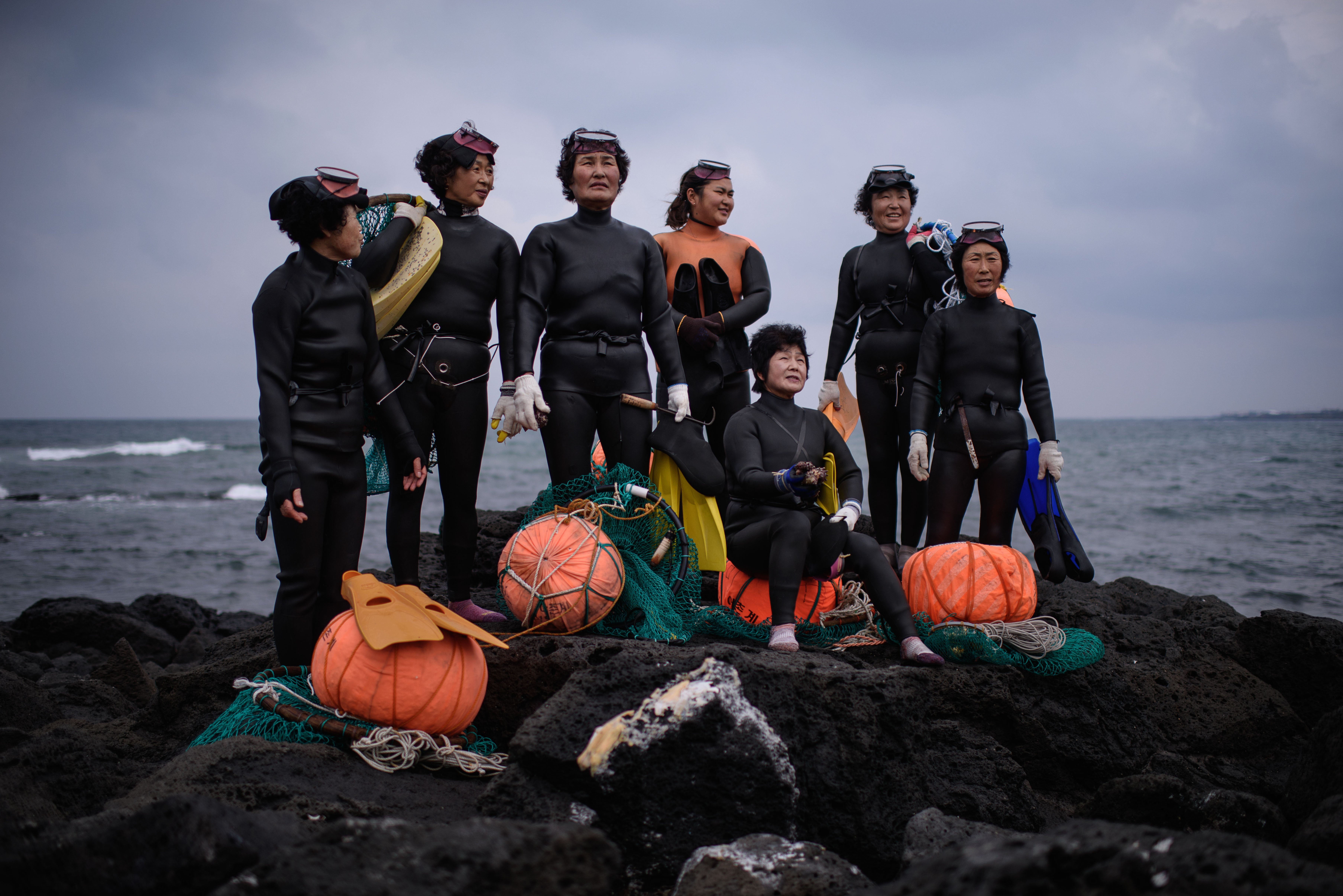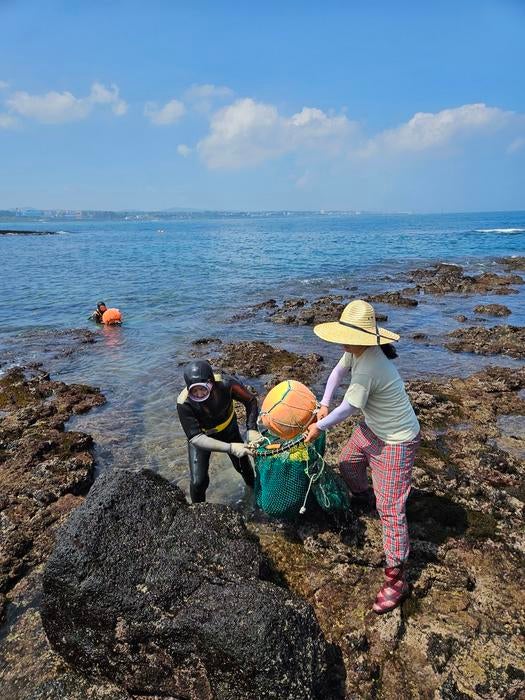ARTICLE AD BOX
A new DNA analysis of Korea’s all-women extreme divers has uncovered genetic adaptations that uniquely protect them from the intense stresses of plunging into coastal waters without oxygen.
The Haenyeo women live their entire lives diving off Jeju Island, 50 miles south of mainland South Korea, spending hours each day harvesting seaweed, abalone, and other food items from the seafloor.
The women, often dubbed real-life mermaids, have been diving to the ocean floor, without oxygen, for hundreds of years. The practice is waning, however, and most accomplished divers are now in their 60s and 70s.
“The practice of breath-hold diving is so integral to Jeju’s culture that the shortening of words characteristic of the Jeju language is colloquially attributed to the need for divers to communicate quickly at the water’s surface,” scientists who conducted the new analysis say.
Some Haenyeo divers jump into the sea even during pregnancy when women must avoid potentially fatal blood pressure conditions like preeclampsia.
What exactly enables the Haenyeo women to survive such extreme conditions has remained elusive.

Studies have shown that factors like relative isolation shape the genetics and physiology of human populations such as those in Greenland and Tibet.
Now, scientists have confirmed that the Haenyeo, renowned for their remarkable diving abilities in frigid waters, are another such population that has “evolved for diving”.
Typically, holding the breath while diving not only limits the body’s oxygen supply but also raises blood pressure. In other contexts, such as sleep apnea, holding the breath is associated with pregnancy-related blood pressure disorders.
“This is not something that every human or every woman can do,” says evolutionary biologist Diana Aguilar-Gómez from the University of California, Los Angeles. “It’s kind of like they have a superpower.”
“They’re absolutely extraordinary women. Every day, they head out and get in the water, and that’s where they work all day. I saw women over 80 diving off a boat before it even stopped moving,” genetics researcher Melissa Ilardo from the University of Utah adds.

The new study examined whether the Haenyeo women’s diving abilities were aided by genetic differences. It measured factors related to their diving ability such as blood pressure and heart rate and sequenced their DNA.
The study, published in Cell Reports, found two changes related to diving physiology that appeared to give the Haenyeo advantages underwater.
One change makes the women over four times more likely than mainland Koreans to have a genetic change linked to lower blood pressure while diving, keeping them and their unborn children safe even when they dive during pregnancy.

The second genetic adaptation appears to provide them greater tolerance to pain, specifically against cold-based pain.
Even when air temperatures off Jeju Island drop to around freezing point in the winter, the Haenyeo don’t stop diving.
“I asked them once if they would stop diving if it got cold enough,” Dr Ilardo said. “They said that as long as the wind alarm doesn’t go off, they’ll still get in the water. The wind alarm is to keep them from blowing out to sea.”

In addition, a lifetime of practice appears to be central to what makes the Korean women’s diving abilities special. Previous studies have found that lifetime divers, whether Haenyeo or not, experience subtle heart rate changes to conserve oxygen for longer.
But while an untrained person may see their heartbeat slow down by about 20 beats per minute over a simulated dive, an accomplished Haenyeo diver experiences a drop up to twice that number, researchers say.
The latest study linking genetic differences to diving ability could advance health care for high blood pressure conditions, like stroke.
“If there’s something about it that actually reduces the risk of stroke mortality, then we could help people everywhere by understanding what’s special about these women,” Dr Ilardo said.









 English (US) ·
English (US) ·